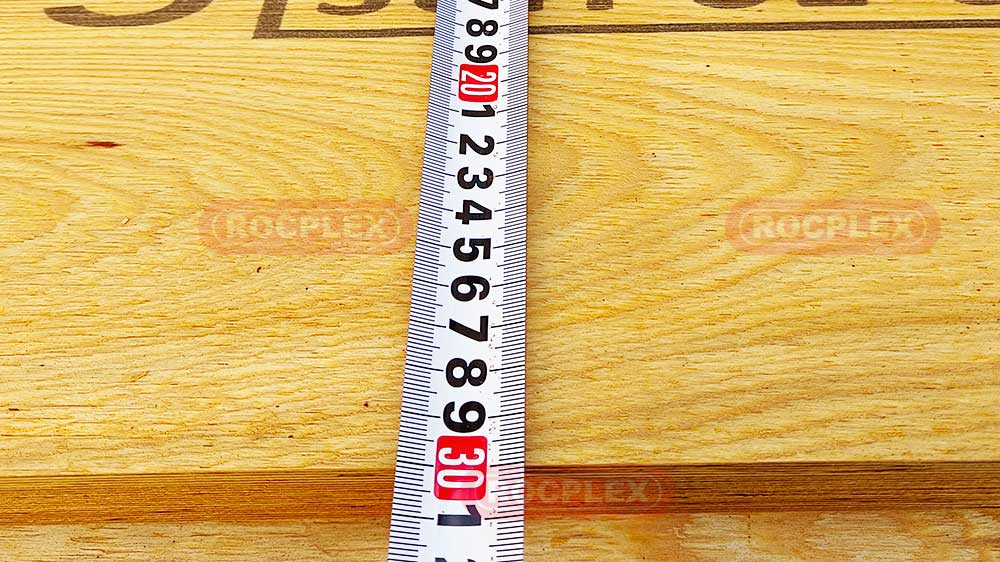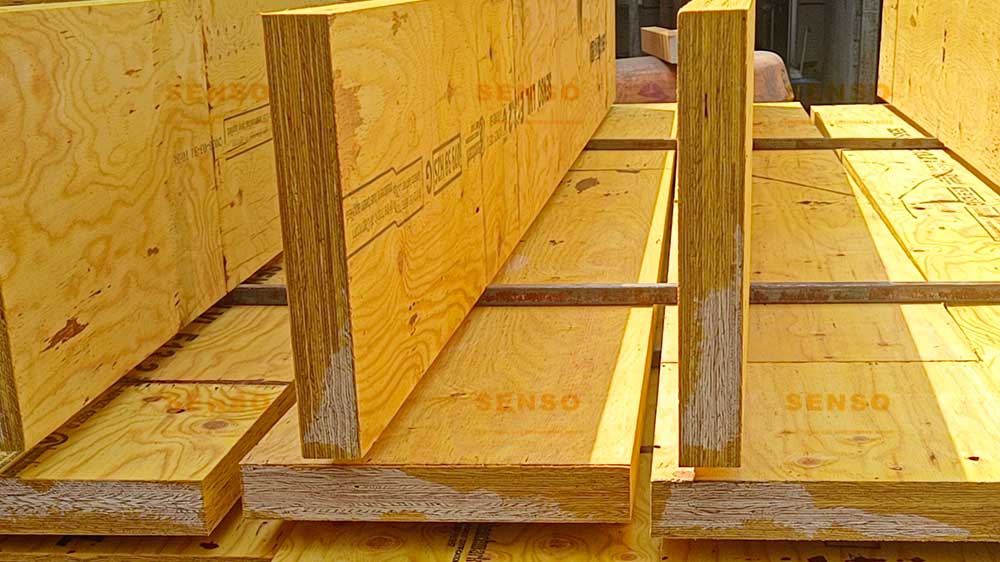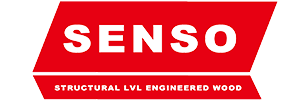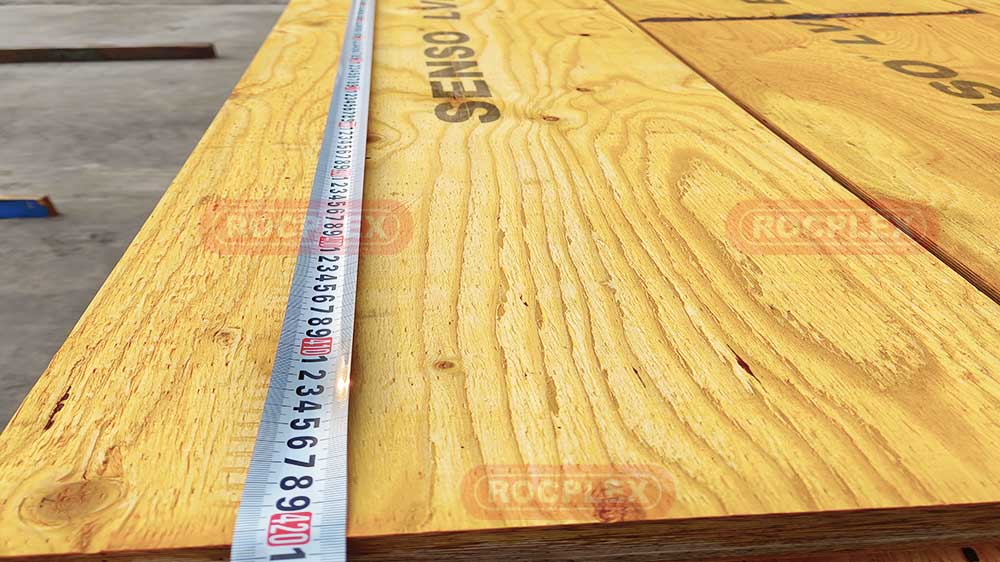Laminated Veneer Lumber (LVL) is a high-strength wood product made from bonding together multiple layers of thin wood veneers. But what does that mean for the average consumer or construction enthusiast? Let’s dive in.
A. What is Laminated Veneer Lumber?
Laminated Veneer Lumber is engineered wood that comprises multiple layers of thin wood glued together. It’s designed to offer greater strength and stability compared to traditional lumber.
B. Why Choose LVL?
LVL offers several benefits over traditional lumber:
1. Strength
LVL is stronger and can bear more weight.
2. Versatility
It can be cut into various timber sizes to suit a wide range of construction needs.
The Science Behind Laminated Veneer Lumber
Understanding the science of LVL can help you appreciate its uniqueness and versatility.
A. The Layering Process
The process involves taking thin layers of wood and gluing them together. This improves the wood’s tensile strength.
B. Quality Control
Every stage of the LVL manufacturing process is tightly controlled to ensure quality. This means you can rely on LVL for your projects.
Understanding Timber Sizes
Timber sizes are an essential part of choosing the right LVL for your project.
A. Common Timber Sizes
You’ll find LVL in various dimensions, allowing for flexibility in design and construction.
1. Thickness
LVL comes in thicknesses ranging from 1.5 inches to 5.5 inches.
2. Width
Width options vary but are usually within 3.5 inches to 14 inches.
3. Length
Typically, you can find lengths from 8 feet to 48 feet.
B. Custom Timber Sizes
In some cases, manufacturers offer custom sizes, catering to unique construction needs.
The Importance of LVL Span Tables
LVL span tables help you determine how much weight a beam can bear over a given distance.
A. What is an LVL Span Table?
An LVL span table is a chart that provides data on the load-bearing capacity of LVL beams over various spans.
B. How to Read an LVL Span Table
Understanding span tables is vital for safe construction. The table will indicate the maximum span for specific timber sizes and load conditions.
1. Span
The span is the distance between the points where the beam is supported.
2. Load
Load refers to the weight that the LVL beam is expected to bear.
Applications of Laminated Veneer Lumber
Laminated Veneer Lumber isn’t just a bunch of wood glued together; it’s a highly functional material with diverse applications.
A. Residential Construction
From framing to flooring, LVL is a popular choice in residential projects due to its strength and stability.
1. Roof Beams
LVL makes an excellent material for roof beams, able to withstand heavy snow and wind loads.
2. Flooring
LVL’s resistance to warping makes it ideal for creating sturdy and long-lasting floors.
B. Commercial Construction
LVL is also an asset in commercial building projects. It is often used for larger structures requiring exceptional load-bearing capacity.
1. Office Buildings
In office buildings, LVL is often used for stair stringers and elevator shafts.
2. Warehouses
LVL beams provide the required support for large, open spaces in warehouses.
DIY Projects and Laminated Veneer Lumber
LVL isn’t just for large construction projects; it’s also great for DIYers looking to bring their visions to life.
A. Furniture Building
From dining tables to bookshelves, the versatility and strength of LVL make it a preferred choice for custom furniture.
B. Garden Structures
Planning on building a gazebo or a pergola? LVL can give these structures the stability they need to last for years.
1. Longevity
LVL is resistant to warping and twisting, making it an excellent material for outdoor projects.
2. Aesthetic Appeal
Due to its smooth finish, LVL adds a touch of elegance to any garden structure.

Environmental Impact and Sustainability
We can’t talk about LVL without considering its environmental impact.
A. Eco-Friendly Manufacturing
Many LVL manufacturers employ eco-friendly practices, such as using non-toxic adhesives and sustainably sourced wood.
B. Durability Equals Sustainability
LVL’s longevity means less frequent replacement, which is good news for our planet.
1. Lower Carbon Footprint
The extended lifespan of LVL products contributes to a lower carbon footprint over time.
2. Recyclability
Some types of LVL can be recycled, further reducing their environmental impact.
What to Consider When Buying LVL
Before you run off to purchase LVL for your next project, there are a few things to keep in mind.
A. Quality Over Price
While it might be tempting to go for cheaper options, remember that you often get what you pay for.
B. Check LVL Span Tables
Always refer to LVL span tables to ensure you’re getting a product that can meet your load requirements.
1. Professional Consultation
Consulting with a structural engineer can offer additional peace of mind when choosing LVL.
2. Warranty
Many quality LVL products come with a warranty, offering further assurance of their durability.
Laminated Veneer Lumber Vs Traditional Timber
The contemporary building scene is a battleground where LVL often goes toe-to-toe with traditional timber. Let’s see how they fare against each other.
A. Strength and Durability
Compared to traditional timber, LVL offers enhanced strength and durability. It is engineered to distribute loads more evenly, thus reducing the risk of structural failures.
B. Cost-Effectiveness
While initially more expensive, LVL often proves to be a more cost-effective choice in the long run due to its durability and less frequent need for replacement.
1. Lifecycle Costs
When you consider the entire lifecycle of a project, LVL’s cost-effectiveness becomes even more apparent.
2. Maintenance
LVL generally requires less maintenance than traditional timber, saving you time and money in the long term.
C. Versatility
LVL’s versatility makes it adaptable to a wide range of projects, from residential homes to skyscrapers. Traditional timber has limitations when it comes to structural applications, which LVL does not share.
1. Customization
LVL can be easily customized to fit specific timber sizes and project needs.
2. Innovation
With advancements in engineering, LVL is continually evolving to meet increasingly complex architectural requirements.
FAQs About Laminated Veneer Lumber
As with any building material, people often have questions about LVL. We’ve compiled some frequently asked queries to help you out.
A. Is LVL Suitable for Outdoor Use?
Absolutely! Just ensure you opt for the type of LVL that has been treated for outdoor use.
B. How Do I Use an LVL Span Table?
An LVL span table is an invaluable tool that helps you understand the load-bearing capacity of your chosen material. It’s like a cheat sheet for making sure your project is safe and sound.
1. Understanding Codes
Understanding the codes and standards in LVL span tables can be a bit tricky but is crucial for your project’s success.
2. Professional Help
When in doubt, don’t hesitate to consult with professionals who can interpret LVL span tables for you.
Best Practices for Working with LVL
Whether you’re a seasoned pro or a newbie, adhering to best practices when working with LVL is always beneficial.
A. Safety First
Always follow safety guidelines. Remember, no project is so urgent that you can’t take the time to be safe.
B. Proper Storage
LVL should be stored flat and elevated from the ground to avoid warping or damage.
1. Humidity Control
Humidity can affect LVL. Store it in a dry place or use dehumidifiers to control moisture levels.
2. Handling
When transporting LVL, make sure it’s adequately secured to prevent any potential damage.
The Sustainability Laminated Veneer Lumber Factor
In an age where environmental consciousness is more important than ever, it’s vital to discuss the sustainability aspects of Laminated Veneer Lumber.
A. Energy Efficiency
LVL is highly energy-efficient, offering excellent insulation properties that can contribute to reduced energy costs for heating and cooling.
B. Carbon Footprint
The manufacturing process of LVL often uses lesser energy compared to other materials, thus reducing its carbon footprint. Plus, the wood used is often sourced from sustainable forests.
1. Certification
Look for LVL products that have sustainability certifications to ensure you’re making an eco-friendly choice.
2. Waste Management
One of the advantages of LVL is that it produces less waste during construction, thereby contributing to a cleaner environment.
C. Recyclability
LVL is also recyclable, offering avenues for repurposing or reusing the material, reducing the load on landfills.
Purchasing Tips for Laminated Veneer Lumber
Whether you’re a contractor or a DIY enthusiast, making the right choice when purchasing LVL is crucial.
A. Know Your Requirements
Before making a purchase, it’s essential to have a clear understanding of your project’s needs, including timber sizes and the relevant LVL span table.
B. Quality Over Cost
While it’s tempting to go for the cheapest option, prioritize quality. This will save you from potential headaches down the line.
1. Warranty and Guarantees
Always check for warranties or guarantees when purchasing LVL, as they can provide an added layer of security.
2. Vendor Reputation
Do your due diligence in researching vendors. Customer reviews and testimonials can be helpful.
Future Trends in Laminated Veneer Lumber
The industry is far from static; let’s peek into what the future holds for LVL.
A. Technological Advancements
Emerging technologies are likely to make LVL even more efficient and versatile.
B. Wider Applications
As the world becomes more comfortable with engineered wood, we can expect to see LVL in even more applications, from ships to furniture.
1. Composite Materials
The integration of LVL with other materials like metal or plastic is a promising future trend.
2. Sustainable Innovations
Expect more sustainable options, such as LVL made from recycled materials or fast-growing renewable wood species.
Frequently Asked Questions about Laminated Veneer Lumber
Understanding a complex material like LVL can be daunting, so let’s address some common queries.
A. Can LVL Be Used Outdoors?
While LVL is primarily an indoor material, certain treatments can make it suitable for outdoor use. Always consult the manufacturer’s guidelines for specific usage conditions.
B. What Are Typical Timber Sizes?
Timber sizes for LVL vary, but common dimensions include widths of up to 4 feet and lengths that can extend to 80 feet. Always consult the LVL span table to ensure your chosen dimensions are appropriate for your application.
1. Custom Sizes
Some manufacturers offer custom-sized LVL beams, tailored to the needs of your project.
2. Tolerance Levels
Each LVL product will have a specified range of tolerance for dimensions, usually measured in millimeters.
C. How to Maintain LVL?
Maintenance largely depends on the location and application of the LVL. Generally, it requires little upkeep but it’s crucial to check for moisture levels and potential signs of wear and tear.
Concluding Remarks and Takeaways
The world of engineered wood is complex, but understanding the properties, benefits, and potential applications of Laminated Veneer Lumber can empower you to make informed decisions for your construction or renovation projects.
A. The Versatility of LVL
One of the main takeaways is the unparalleled versatility of LVL. Whether you’re building a home, an office space, or a piece of furniture, LVL is a reliable choice.
B. Importance of Planning
Remember that planning is crucial; the LVL span table and appropriate timber sizes are your roadmap to a successful project.
1. Consult Professionals
If in doubt, consulting with architects or structural engineers familiar with LVL can provide invaluable insights.
2. Continuous Learning
The more you know about this engineered wood, the better. Stay updated with the latest trends and research in the field.

A Glimpse into the World of Laminated Veneer Lumber
Laminated Veneer Lumber has revolutionized the construction industry by providing a versatile, strong, and sustainable alternative to traditional lumber. With its wide range of applications and continually evolving technology, LVL is a material well worth considering for your next project.
Post time: Sep-17-2023


